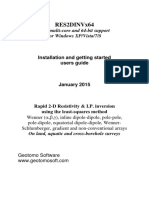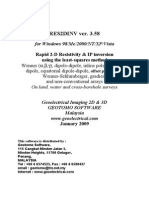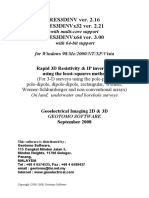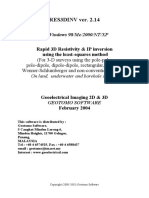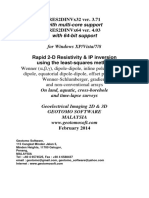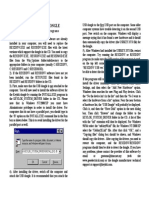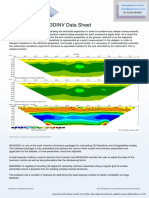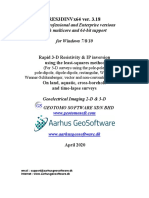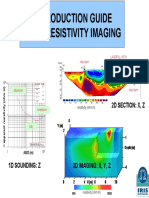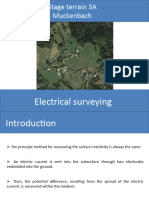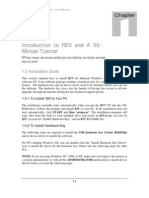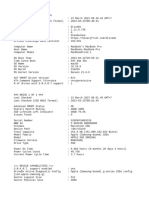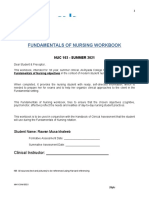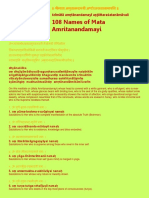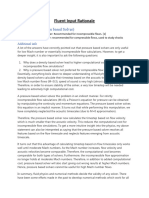0% found this document useful (0 votes)
66 views16 pagesRes2dinv Guide
RES2DINVx64 is a Windows-based software for 2-D resistivity modeling using various electrical imaging survey methods, supporting multi-core CPUs and large data sets. The document includes installation instructions, system requirements, and a quick start guide for users, along with important notices regarding dongle protection and support. It emphasizes the need for proper data formatting and provides contact information for technical support.
Uploaded by
Mariana SchibelsckyCopyright
© © All Rights Reserved
We take content rights seriously. If you suspect this is your content, claim it here.
Available Formats
Download as PDF, TXT or read online on Scribd
0% found this document useful (0 votes)
66 views16 pagesRes2dinv Guide
RES2DINVx64 is a Windows-based software for 2-D resistivity modeling using various electrical imaging survey methods, supporting multi-core CPUs and large data sets. The document includes installation instructions, system requirements, and a quick start guide for users, along with important notices regarding dongle protection and support. It emphasizes the need for proper data formatting and provides contact information for technical support.
Uploaded by
Mariana SchibelsckyCopyright
© © All Rights Reserved
We take content rights seriously. If you suspect this is your content, claim it here.
Available Formats
Download as PDF, TXT or read online on Scribd
/ 16
